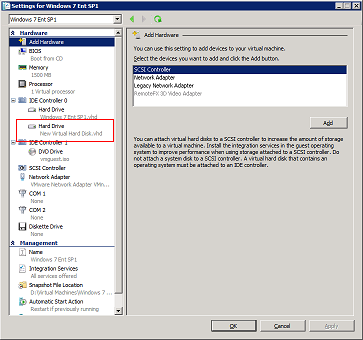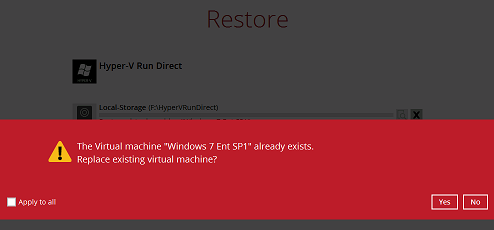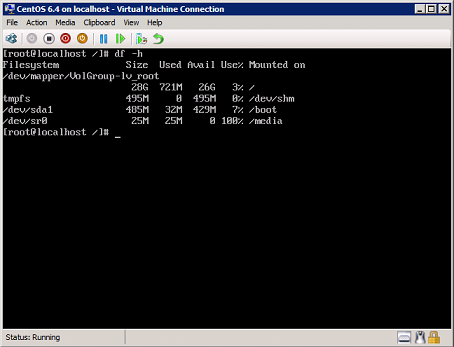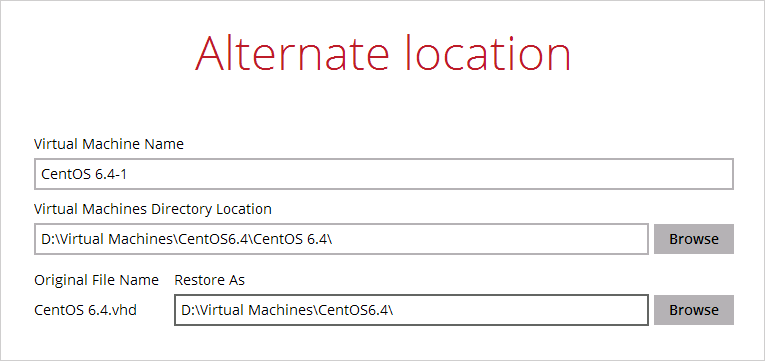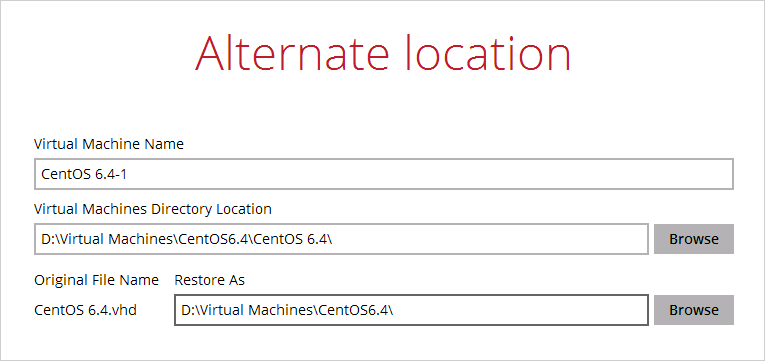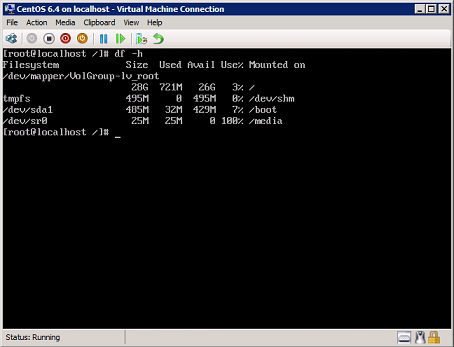User Tools
Sidebar
Non Run Direct Restore
This is the conventional restore method where CloudBacko Pro will restore the guest virtual machine files to the Hyper-V server.
Restore to Original Hyper-V Host
Restore of a Guest VM to the Original Hyper-V Host (Original Location) – This option will restore guest VM to original location which contains the backed up guest VM.
Restore of a Guest VM to the Original Hyper-V Host (Alternate Location) – This feature will restore any guest VM to another location (a different disk or folder) on the same Hyper-V host.
a). Restore of Guest VM to the Original Hyper-V Host (Original Location)
1. In the CloudBacko Pro main interface, click the Restore icon.
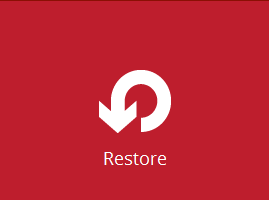
2. Select the backup set that you would like to restore the guest virtual machine from.

3. Select the CBS, cloud, SFTP/FTP or drive storage destination that contains Hyper-V guest virtual machine that you would like to restore.
Example: Restore from D:\ drive

4. If the backup set is created with Run Direct feature or Granular Restore feature enabled, the following step will show. Select Restore virtual machines as the restore mode.
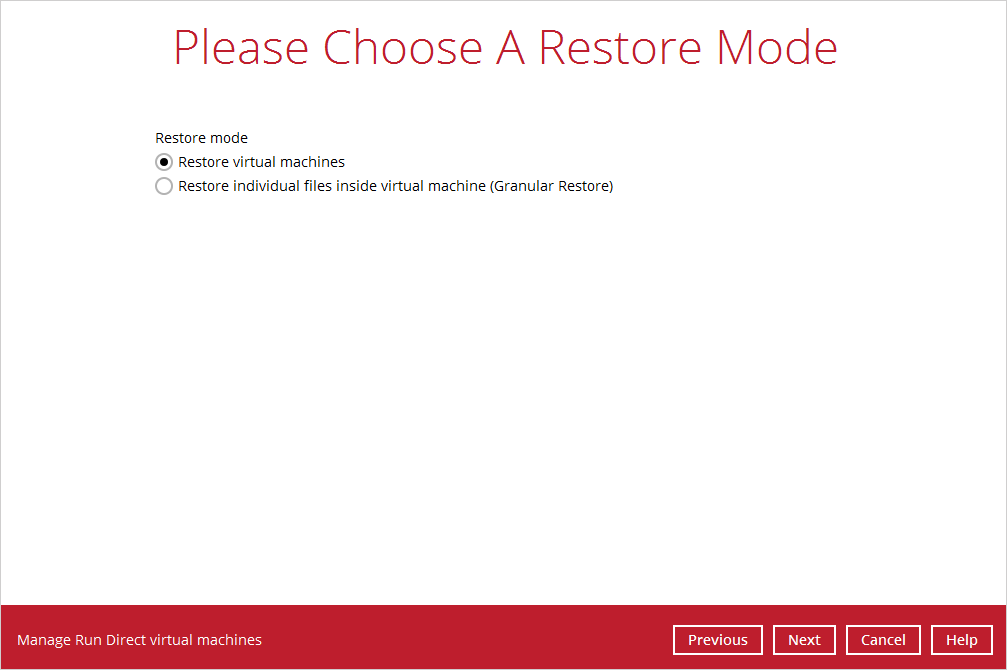
5. Select to restore the Hyper-V guest from a specific backup job then select the files or folders that you would like to restore. Click Next to proceed.
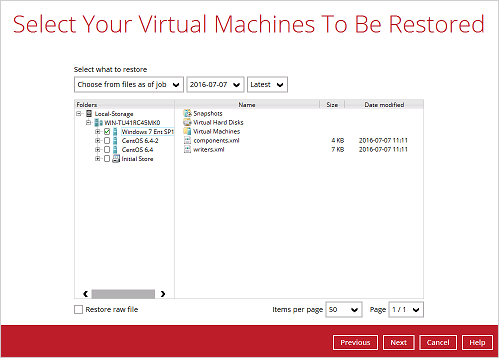
6. Select to restore the Hyper-v guest VM to the Original location.
7. Confirm the temporary directory path is correct and then click Restore to proceed.

8. If the guest virtual machine selected to be restored already exists on the Hyper-V server CloudBacko Pro will prompt to confirm overwriting of the existing guest.
- Yes - the exiting guest virtual machine will be deleted from the Hyper-V server before the restore process starts.
9. After the Hyper-V guest virtual machine has been restored.
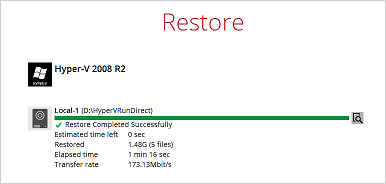
10. Go to the Hyper-V server and open the Hyper-V Manager to verify the guest has been restored and power on the guest virtual machine.

11. Connect to the guest virtual machine to verify if is running correctly.
b). Restore of Guest VM to the Original Hyper-V Host (Alternate Location)
This feature will restore any guest VM to another location (a different disk or folder) on the same Hyper-V host. The Restore to Alternate location can be used to restore only one guest virtual machine at any one time.
1. In the CloudBacko Pro main interface, click the Restore icon.
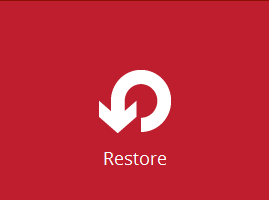
2. Select the backup set that you would like to restore the guest virtual machine from.

3. Select cloud, SFTP/FTP or drive storage destination that contains Hyper-V guest virtual machine that you would like to restore.
Example: Restore from D:\ drive

4. If the backup set is created with Run Direct feature or Granular Restore feature enabled, the following step will show. Select Restore virtual machines as the restore mode.
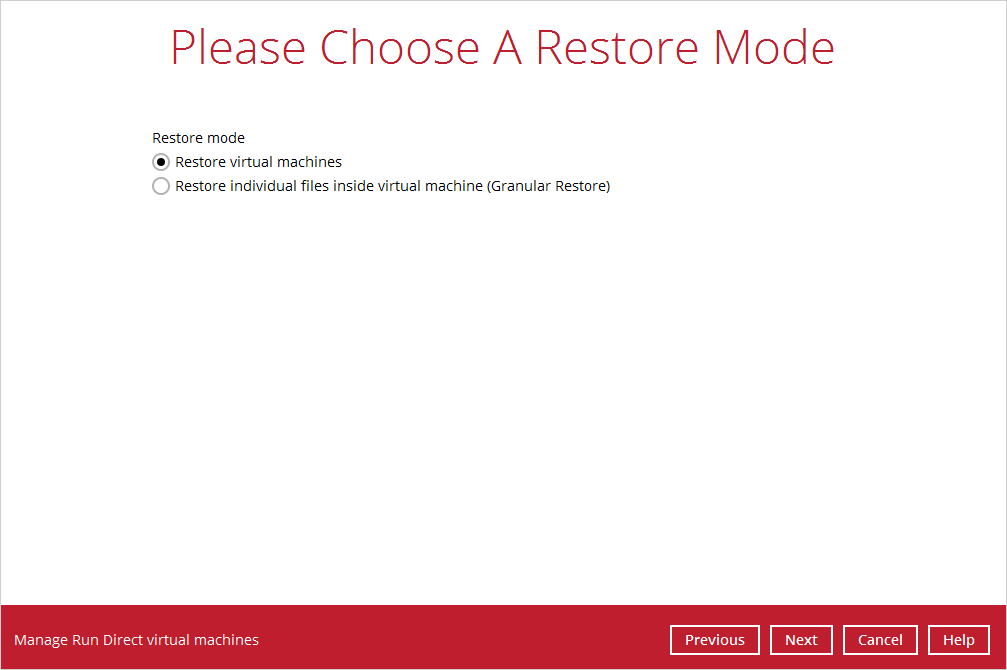
5. Select to restore the Hyper-V guest from a specific backup job then select the files or folders that you would like to restore.
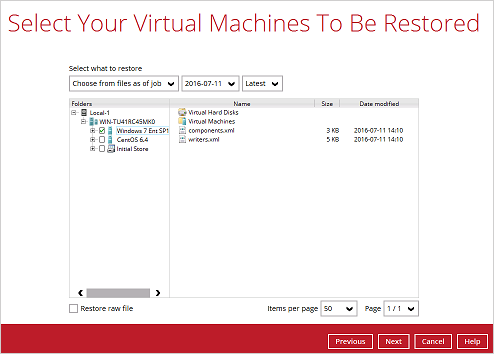
6. Select to restore the Hyper-v guest VM to the Alternate location.
Click Next to proceed and the following values are needed to be update:
- Virtual Machine Name
- Virtual Machines Directory Location (guest configuration files)
- Restore As (new location for the guest VHD files)
Example:
- Rename the restored guest VM to CentOS 6.4-1
- Store the configuration files in the new location D:\Virtual Machines\CentOS6.4\CentOS 6.4\
When the values have been updated click on Next to proceed.
7. Confirm the temporary directory path is correct and then click Restore to proceed.

8. After the Hyper-V guest virtual machine has been restored successfully

9. Open Windows File Explorer and verify the guest has been restored to the new location.
Restore to Different (Standby) Hyper-V Host
This restore option allows you to restore your backed up guest VM to another Hyper-V host, for example if your original Hyper-V host is down and you need to restore your production guest VM’s to a standby Hyper-V host.
1. On the machine where you wish to restore the VM, launch CloudBacko Pro and click the Restore icon on the main interface.
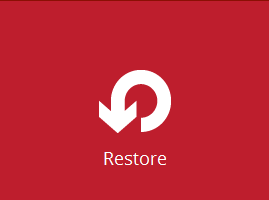
2. Select the backup set that you would like to restore the guest virtual machine from.

3. If encryption key was set at the time when the backup set was created, enter the encryption key when you see the following prompt.

4. Select cloud, SFTP/FTP or drive storage destination that contains Hyper-V guest virtual machine that you would like to restore.
Example: Restore from D:\ drive

5. If the backup set is created with Run Direct feature or Granular Restore feature enabled, the following step will show. Select Restore virtual machines as the restore mode.
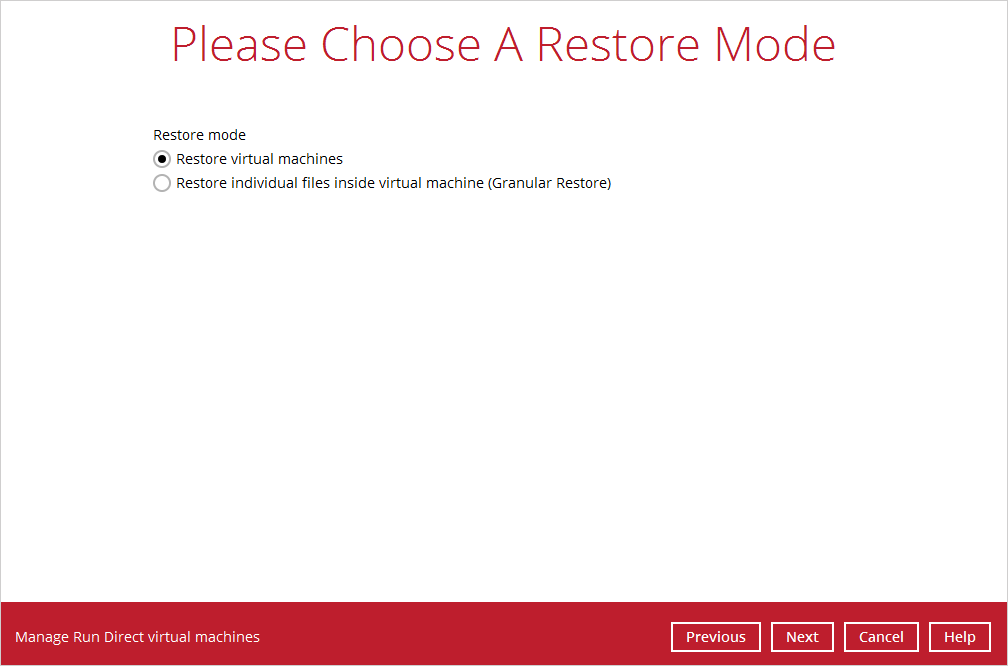
6. Select to restore the Hyper-V guest from a specific backup job then select the files or folders that you would like to restore.
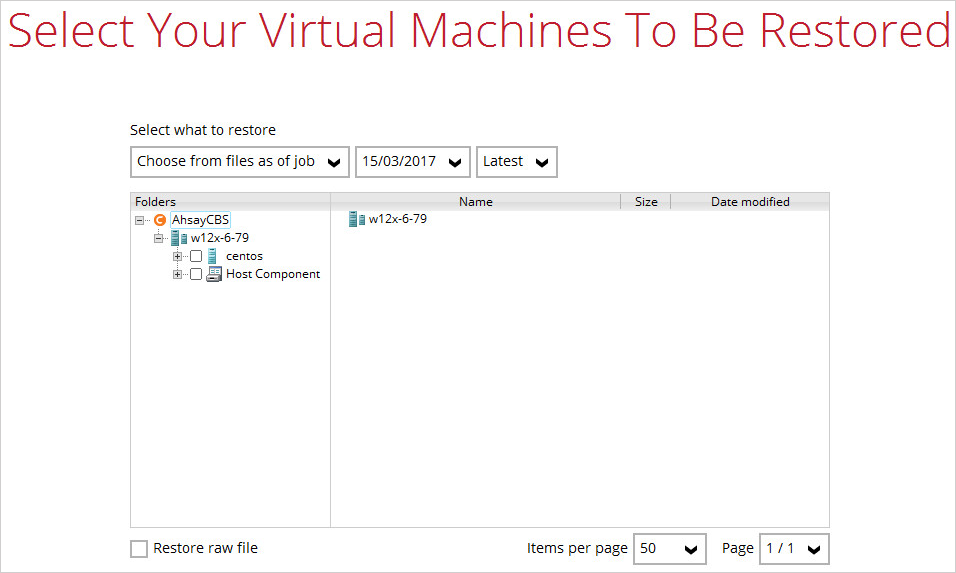
7. Select to restore the Hyper-V guest VM to the Original location, or to an Alternate location. Then click Next to proceed.
- Original location – The Hyper-V guest VM will be restored to the same directory path which stores the backup source on the original Hyper-V host.
- Alternate location – The Hyper-V guest VM will be restored to the different directory path on the original Hyper-V host.
Click Next to proceed and the following values are needed to be update:
- Virtual Machine Name
- Virtual Machines Directory Location (guest configuration files)
- Restore As (new location for the guest VHD files)
Example:
- Rename the restored guest VM to CentOS 6.4-1
- Store the configuration files in the new location D:\Virtual Machines\CentOS6.4\CentOS 6.4\
When the values have been updated click on Next to proceed.
8. Confirm the temporary directory path is correct and then click Restore to proceed.

9. Click Restore to start the restore process.
10. The following screen shows when the restore is completed.

11. Go to the Hyper-V server and open the Hyper-V Manager to verify the guest has been restored.

12. Connect to the guest virtual machine to verify if is running correctly.
Individual Virtual Disk Restore
The Restore raw file feature is used to the restore of an individual virtual disk to the original or a different guest VM.
1. In the CloudBacko Pro main interface, click the Restore icon.
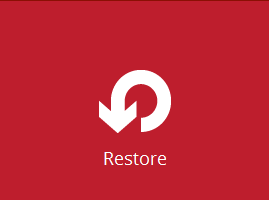
2. Select the backup set that you would like to restore the guest virtual machine from.

3. Select the CBS, cloud, SFTP/FTP or drive storage destination that contains Hyper-V guest virtual machine that you would like to restore.
Example: Restore from D:\ drive

4. If the backup set is created with Run Direct feature or Granular Restore feature enabled, the following step will show. Select Restore virtual machines as the restore mode.
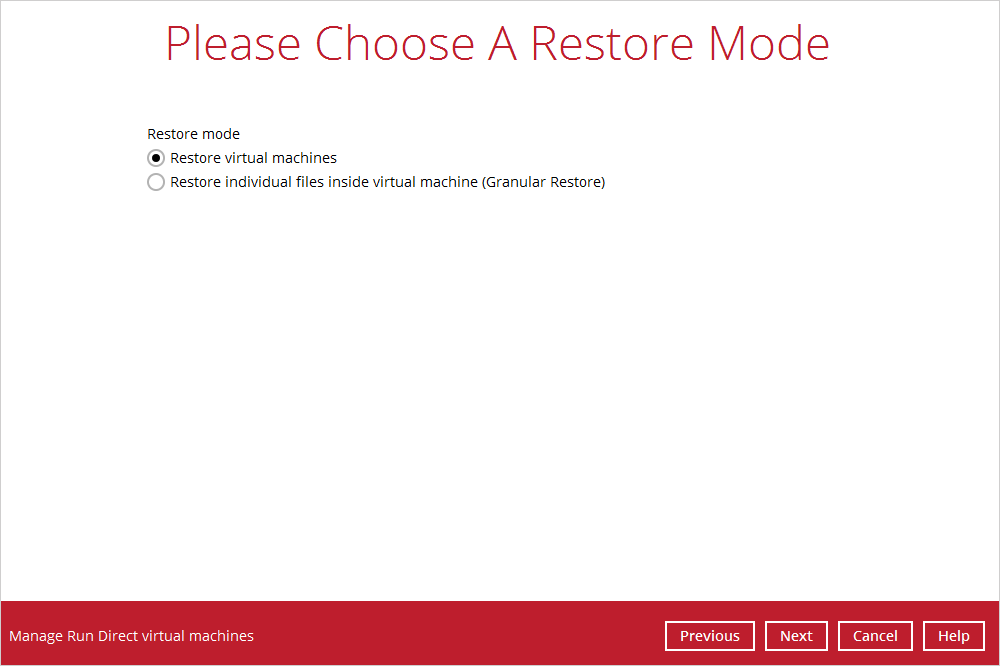
5. Select to restore the Hyper-V guest from a specific backup job then select the files or folders that you would like to restore.
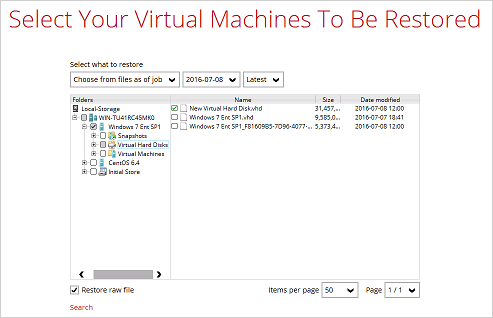
6. Then select the Restore raw file option and under the Virtual Hard Disks folder select the virtual disk you would like to restore. Click Next to proceed.

7. Select to location on the Hyper-V server you want to restore the virtual disk to. Click Next to proceed.
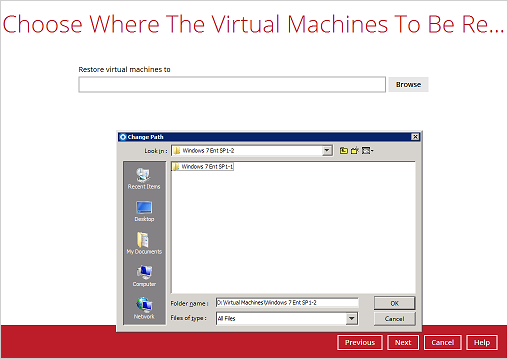
8. Confirm the temporary directory path is correct and then click Restore to proceed.

9. After the Hyper-V guest virtual machine has been restored.

10. In Hyper-V Manager, right click on the guest virtual machine you wish to add the virtual disk to and select Settings.
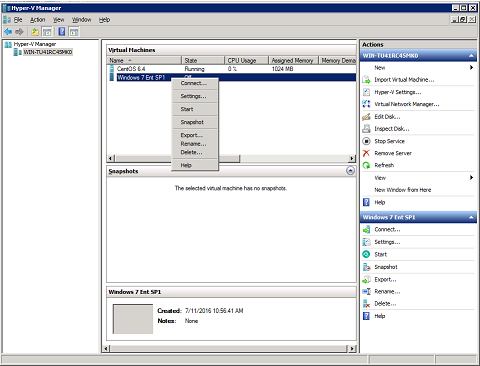
11. Select Add to add virtual disk to the guest virtual machine.
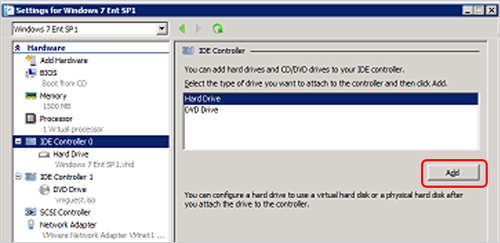
12. Click on Browse to choose the according vhd file.
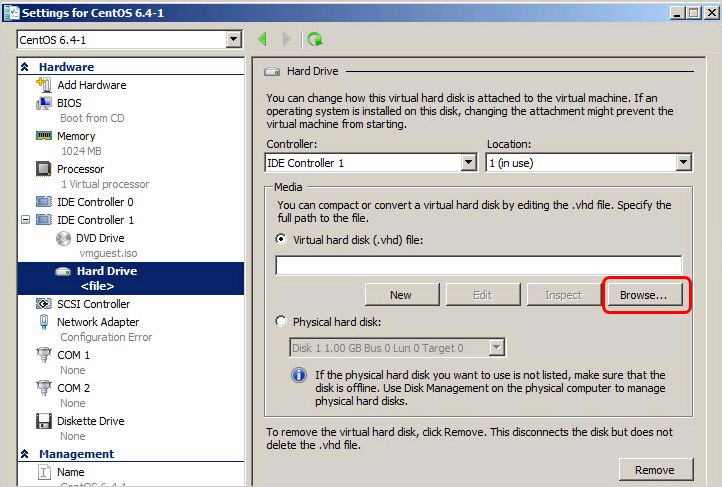
13. Select the folder where the restore virtual disk is located.
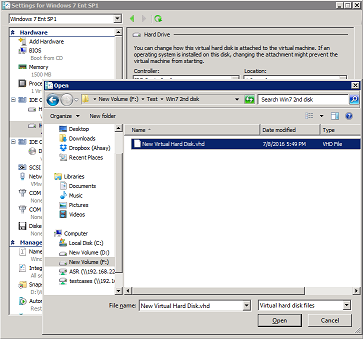
14. After the virtual disk is added. Start the guest virtual machine to confirm. Depending on the guest operating system there may be other configuration settings to be completed before the disk is available.
